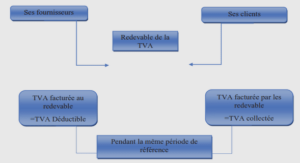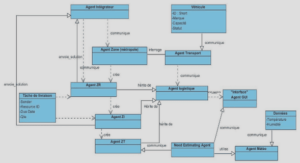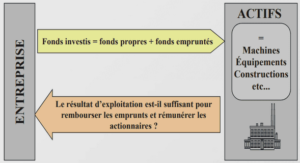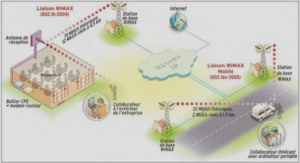In today’s difficult mobility environment, especially with the current demographic development, the transport sector in Algeria has undergone enormous development in the recent few year from cars and buses to trams and metros, where buses continue to be the preferred mean of transport for Algerians because of its advantage and low cost, seeing an increase in the number of buses to meet the huge demand. However, transport companies have been growing while Maintaining an obsolete management system; as a result, companies Are facing risks of embezzlement. Bus monitoring agents have been used while it leaves a gap due to the inability of covering the whole trip. The urgent need for a global monitoring system became inevitable, and public transport companies should offer safer and more economical solutions and this requires effective transport system management and planning. This chapter helps to understand the public transport types and its management systems and, furthermore, the assets embezzlement risks faced by the bus transport companies in Algeria.
Case study and motivation
Since the decision to study at the University of Tlemcen, the bus trip was the most convenient means of transport for us. It has been noticed that sometimes, while booking the trip (other than in the booking office), the conductor of the bus has not given us a ticket, not paying attention to it the first time, but this action is often repeated. After explaining this problem to the ELIP startup jurors and coaches Entrepreneurship, Leadership, and Innovation Program, they have asked for more information about this problem, where they have motivated us to investigate and to apply our knowledge to study such problems. In order to identify and understand the source of the problem, a meeting with the director of the transport company was necessary, he expressed several problems encountered in his company, he said: « you came at the right time, today a receiver stole 13 000 DA from me in one trip and fortunately I was able to catch up with him ». A second manager of the wilaya of Mostaganem, when he explained same problems within his company, he told us: « when a bus goes out for a daily trip, the driver does not respect his route, he makes extra trips without telling me », thus stealing the money of this trip. Those are some witness and victim of this case of study.
Definition of transport
Transport is a fundamental element in the sustainable development of a country. One of the means to achieve economic development is to provide modern transport systems and networks to ensure social welfare and environmental protection. And could be defined as: “The movement of goods and persons from place to place and the various means by which such movement is accomplished” (The Editors of Encyclopaedia Britannica, 2019). Transport also is known as a commercial activity. It involves transporting both people and goods over specified distances by various means such as vehicles, buses, subways, trains, etc. These companies are considered as profit-making enterprises and are subject to the National Transportation Low.
The development of transportation
Historically, animals was used as a « means of transport », and this method has been widespread for thousands of years, where They have used the animal either by mounting it or driving it to a cart-carriage. Another mean is the mobility by natural factors as Maritime transport, where it is also used to transport goods and people; after the creation of sailing ships, it became an important means of trade. This means of transport uses the force of the wind and, in some cases, rowing was used. Later, another invention was the first steam engine (Denis Papin) which used steam to move the vehicle; and since then, the invention continues to gain access to various technologies. To reduce travel time and create powerful machines using gas, gasoline, electricity, and the nuclear cell of submarines, the latest invention in this field is the use of hydrogen energy. The invention in this field will never stop.
Means of transport
The modes of transport are various but with the same purpose, to move from one place to another. These means are mentioned as follows:
Air Transportation
Air transportation is the activity of moving passengers or cargo by air. Air transportation is managed by airline companies using airplanes. Most aircraft are equipped for the transport of goods and passengers. Most airlines jointly run two activities: commercial flights (for passenger transport) and cargo flights (for the transport of goods). The most important technical characteristics of the airplanes mean are the capacity (weight or volume), the range, and the speed. As a result of research in this field, airlines were obliged to adjust their network according to the capacity of their planes, which made it necessary to make technical stopovers on certain routes.
The increase in performance has gradually removed these constraints and airlines now have a decisive say in the drafting of plane specifications (Organisation de aviation civile internationale, 2004, pp. 1–3).
Maritime transport
The maritime transport depends on an infrastructure composed of seaports and canals. However, there are two modes of this type of transport: the maritime transport of people, and the maritime transport of goods, using a combination of ships, ferries, and mega-ships. Where the maritime transport is in development since the invention of the steam engine in the 19th century. Overcome natural constraints such as wind and sea currents with various ships and technical vessels, and to cover large distances while having a high load capacity.
Road transportation
The road transport system is one of the best, most flexible and efficient methods. This means carrying people (or goods) through different types of vehicles, trains, subways, and buses. There are five modes of road transport:
Tramway
The tramway is a means of public transport with electric traction running on rails. this means of transport has the capacity to carry a substantial number of passengers (up to 10,000). and it has many advantages such as the insignificant nuisances, and known by its benefit to reduce the heavy traffic in big cities; on the other hand, this means of transportation has an important cost of investments, and difficult implantation.
Subway
The subway depends on urban traction railways on an underground site or a bridge. The metro is considered an excellent means of urban transport in the major capitals of the world where the Paris metro is a good example.
The bus
The bus is the most used mean due to its great flexibility, and low-cost—in term of energy consumption and journey trip, but he is the most polluting and the least efficient due to its limited capacity in terms of the number of passengers, often be one of the main reasons for traffic jams on the roads, unless it runs in dedicated lanes. As an alternative, the minibuses are the most comfortable and the fastest on road.
The car (Taxi)
Although the car (taxi) offers the same advantages and disadvantages as the bus, it also supplies more personal service and comfort, speed, and flexibility.
Rail transport
At the beginning of the birth of railway transport, the use of it was only to transport coal, in horse-drawn trains on wooden rails; and rather in 1832, this means of transport began to transport passengers, where England was the first place that knew it, using steam locomotives, running on metal rails. The focus of the development within the means of transport is to find the best way to get from one point to another. Indeed, a key factor in this development is to put proper fleet management, and the management of the different cities in networks, to satisfy people’s need for transport.
Introduction |





